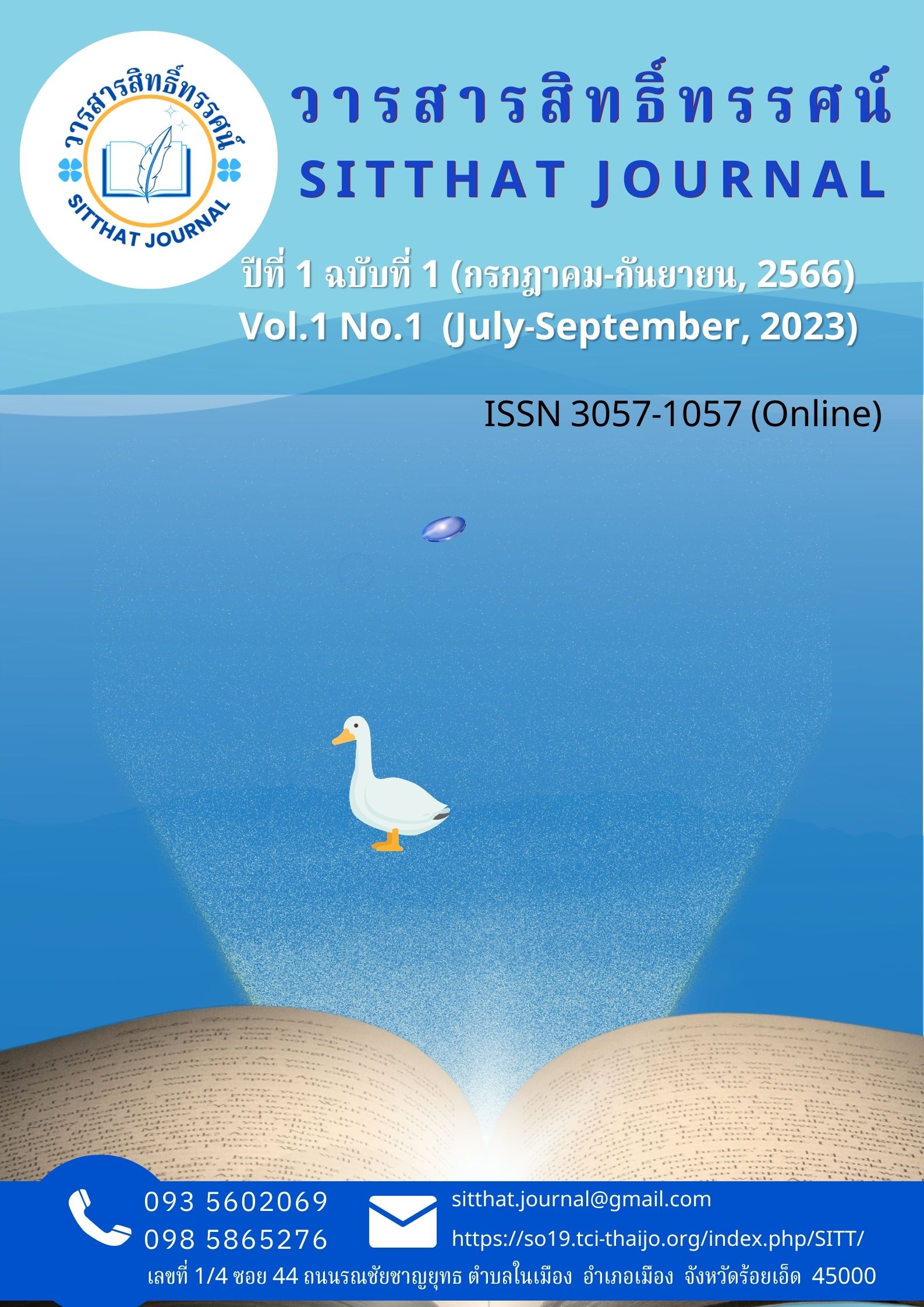PUBLIC PARTICIPATION IN WASTE MANAGEMENT IN UDON THANI PROVINCE
Main Article Content
Abstract
This research aimed to 1) study the public participation in solid waste management in Udon Thani Province, 2) study the factors of public participation in solid waste management in Udon Thani Province, and 3) study the guidelines for public participation in solid waste management in Udon Thani Province. The research was conducted using both quantitative and qualitative methods. The research instruments used were questionnaires and interviews. The sample groups were 400 people aged 18-60 years and 10 qualitative informants. The frequency and percentage distributions of the questionnaire respondents were analyzed by presenting them in tables using the mean and standard deviation. The multiple regression analysis was performed using the hierarchical variable selection method, which was used to discuss the results. The descriptive data analysis was performed by selecting and classifying the data, organizing the data systematically, editing the data, and analyzing the data. The data was then written as a report.
The research results found that 1) the public participation in solid waste management in Udon Thani province in all aspects was at a moderate level ( =3.07, S.D=.38). Considering each aspect, it was found that the participation in assessment was at a moderate level ( =3.12, S.D=.38), the participation in policy determination was at a moderate level ( =3.08, S.D=.17), and the participation in policy implementation was at a moderate level ( =3.03, S.D=.69), respectively. 2) Factors of public participation in solid waste management in Udon Thani province in all aspects found that the coefficient of predictor in operational planning X5 was -1.087, respectively, and the coefficient of predictor in standardized score (β) was -.644, respectively, and 3) It is necessary to determine an integrated operational policy to create participation of all relevant persons, and to have an operational plan that covers all sectors. There is a concrete and continuous determination of policies, plans, projects or activities in policy planning that is consistent with government policy. Support and encourage officials to provide knowledge. Government agencies and networks promote and create strength according to the process and causes of problems and operational plans Evaluation of efficiency from the implementation of policies, strategies, long-term plans, operational plans, including various activities Evaluation of opinions, monitoring of the results of activities according to strategies, operations reflecting problems, and systematically summarizing the joint evaluation results.
Article Details

This work is licensed under a Creative Commons Attribution-NonCommercial-NoDerivatives 4.0 International License.
บทความนี้
References
เกียรติขจร วัจนะสวัสดิ์. (2550). กฏหมายอาญาภาคความผิด เล่ม 1 พิมพ์ครั้งที่ 5. กรุงเทพมหานคร:
จิรรัชการพิมพ์.
กัลยา วานิชย์บัญชา .(2542). การวิเคราะห์สถิติ: สถิติเพื่อการตัดสินใจ. พิมพ์ครั้งที่ 4.
กรุงเทพมหานคร :โรงพิมพ์แห่งจุฬาลงกรณ์วิทยาลัย.
บวรศักดิ์ อุวรรณโณ และถวิลวดี บุรี กุล. (2548). ประชาธิปไตยแบบมีส่วนร่วม. กรุงเทพมหานคร:
สถาบันพระปกเกล้า.
พระบุญเพ็ง สิทธิวงษา, และคณะ. (2561). การมีส่วนร่วมในการส่งเสริมสุขภาพพระสงฆ์ในเขตการปกครอง
คณะสงฆ์ ภาค 9 หลักสูตรรัฐประศาสนศาสตรดุษฎีบัณฑิต สาขาวิชารัฐประศาสนศาสตร์
มหาวิทยาลัยภาคตะวันออกเฉียงเหนือ.
มณฑล เอกอดุลย์พันธ์. (2553). การมีส่วนร่วมของประชาชนในการอนุรักษ์สิ่งแวดล้อม กรณีศึกษา
ตลาดน้ำตลิ่งชัน เขตตลิ่งชัน กรุงเทพมหานคร. วิทยานิพนธ์รัฐศาสตร มหาบัณฑิต, สาขา
รัฐศาสตร์, บัณฑิตวิทยาลัย, มหาวิทยาลัยนเรศวร.
วิษณุ หยกจินดา. (2557). การมีส่วนร่วมของประชาชนในการพัฒนาชุมชน หมู่บ้านทุ่งกร่าง ตำบล
ทับไทร อำเภอโป่งน้าร้อน จังหวัดจันทบุรี ชลบุรี : วิทยาลัยการ บริหารรัฐกิจ
มหาวิทยาลัยบูรพา.
สมไทย วงษ์เจริญ. (2551). คู่มือการคัดแยกขยะประจำบ้าน. กรุงเทพมหานคร: จำปาทองพริ้นติ้ง.
Taro Yamane. (1973). Statistics: An Introductory Analysis.3 rdEd.New York.Harper and
Row Publications.


